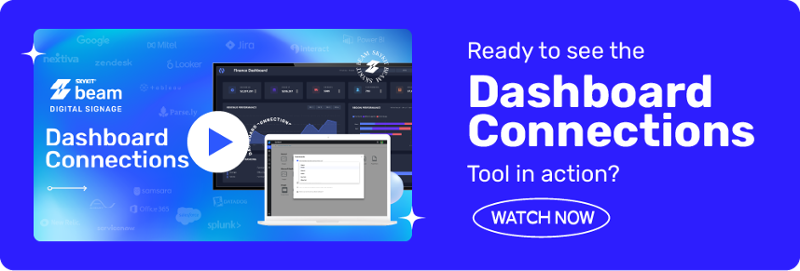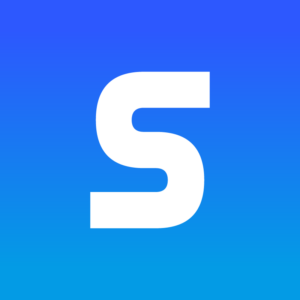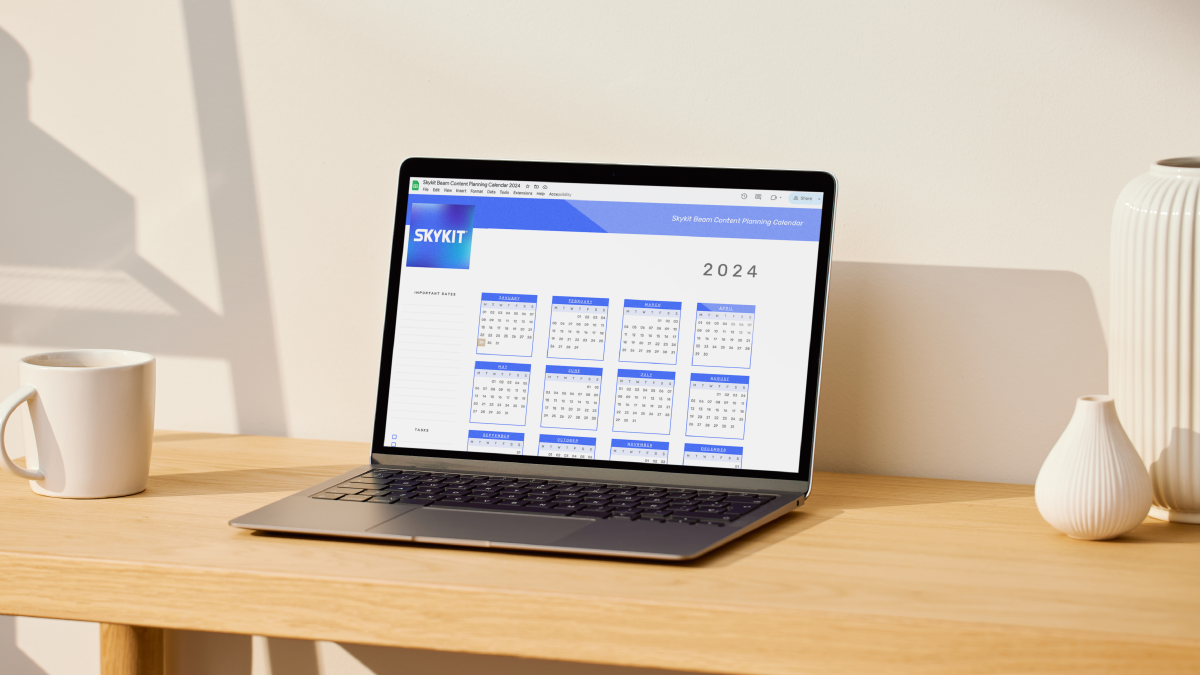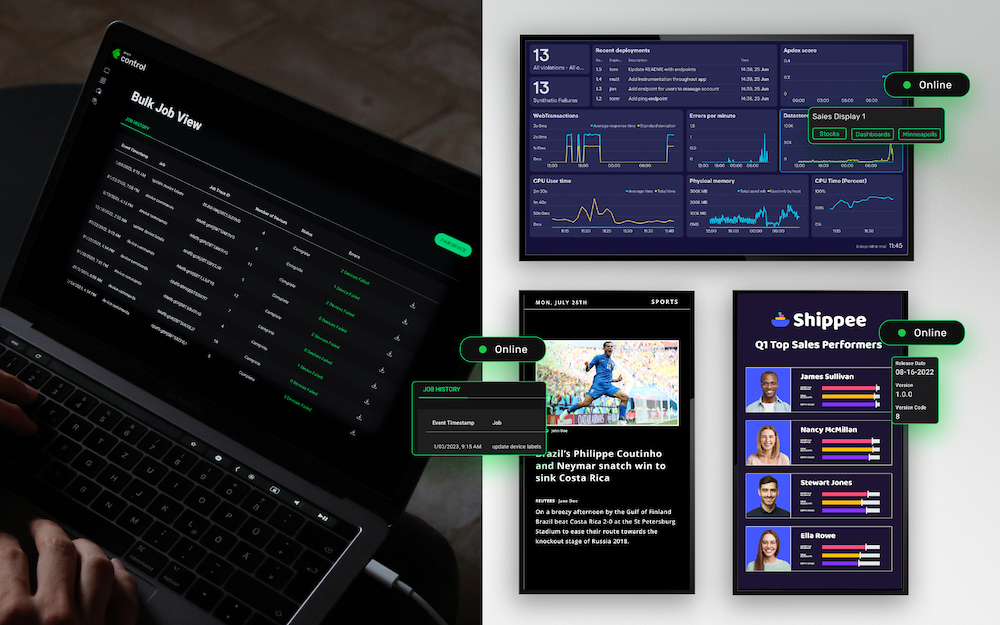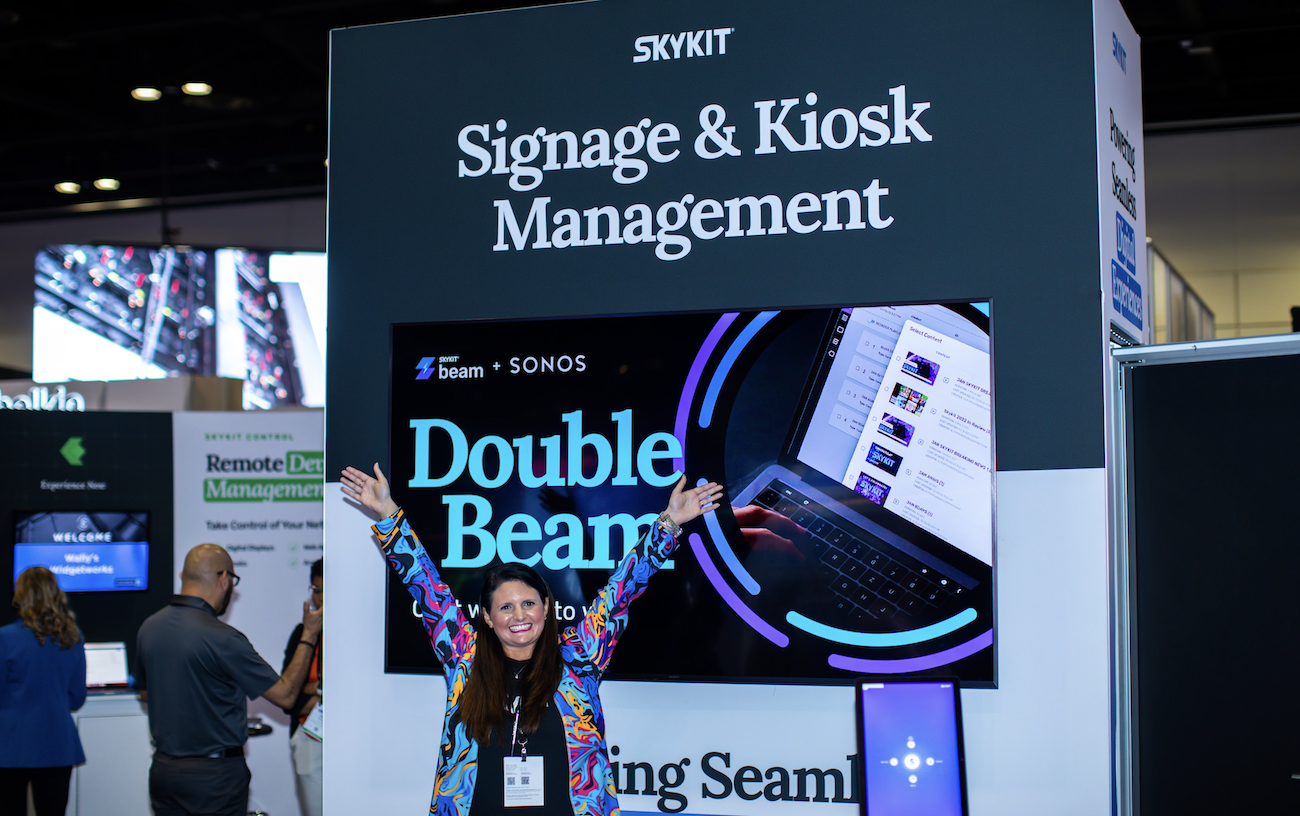This scenario might be hypothetical, or maybe this is the exact situation you’re facing. You have the data and have created a great dashboard that tells a clear story and helps direct where your company or department should go.
Now, you’re looking into using a TV monitor as a display board in your office space so employees can engage with the real-time data. In the past, this could be challenging, as the reach of data visualization tools can be extremely limited, often just to those who have individual access.
At Skykit, our customers began asking us critical questions about how to extend the reach of their dashboards. How can they display their dashboards on digital signage or a TV so all employees can see the visualizations? Ultimately, our customers want to increase visibility into the data to help engage employees and encourage them to make smarter decisions.
Let’s take a look at three ways in which you can provide visibility into your data and how to effectively use a TV for digital signage.
Directly Connect a Computer to a Digital Screen
Connecting a computer to a TV is one of the first methods many companies used to operate digital signage. With this configuration, you could show virtually any information you wanted, simply by placing a computer near the screen and connecting it directly with cabling.
Key Advantages
- Straightforward Connection: Cabling a computer to a display is pretty simple. All you need is a computer, the proper cable, and a display. Almost anyone in your organization with basic technology skills should be able to help set up this configuration.
- One-Time Set-Up Costs: After your initial investment in the hardware, the costs associated with this type of direct connection may not incur ongoing fees.
- No Internet Connection Required: One advantage to displaying content through a direct connection computer and cable is that internet connectivity is not required if your content is saved to the hard drive of the computer.
Disadvantages
- Inability to Connect Regularly: A direct connection must be powered up each and every day. If the employee assigned to manage this system isn’t at work one day, the screen may be down or show dated content.
- Intentional or Accidental Human Disruption: A direct connection between a computer and a screen is easy to disrupt. Employees or visitors may “borrow” your HDMI cabling or may opt to directly connect their own computer to the screen and forget to reconnect your configuration.
- Inability to Scale: With a direct computer-to-screen connection, you must have a computer assigned to every screen. And someone designated to power up, log in, and manage each individual screen and content. If that person is not the owner of the dashboard, you are also putting your network and data security at great risk.
Use Screencast to Display a Dashboard on a TV
Screencasting from a tablet to a Smart TV is another way you could display a dashboard on a TV. This is an option if you host your dashboards locally on a tablet and are then able to display them through screen mirroring.
Key Advantages
- Uses Existing Hardware: Screencasting can be a cost-effective way to showcase dashboards to your audience. The only hardware required is a tablet and a Smart TV.
- No Additional Cables: To connect your tablet to the TV screen, you don’t need additional cables and you can use your existing internet connection to share your content. Just be sure your internet connection can support the content being displayed and the necessary bandwidth.
Disadvantages
- Configuring Content is Challenging: When you screencast, you’re not able to truly configure the content to look its best. What you see is what you get — you cannot hone in on one portion of your data or dashboard without showing the rest. You cannot reset the orientation, either.
- Security Issues: In this configuration, your dashboard’s security is left up to anyone who has access to the device and dashboard application. How does the phrase, ‘Here’s my login, don’t share it with anyone,’ make you feel about your device’s security? Too often a shared login is used, creating a signage solution that can be easily compromised.
Connect a Dashboard to a Screen Using a Cloud-Based CMS
In most instances, this is the best option for displaying dashboards on TVs. Today’s cloud-based digital signage CMS tools, like Skykit Beam, enable you to securely display your dashboard across monitors in any number of locations and overcome all the disadvantages of the other two options presented above.
Key Advantages
- Easily Scalable: A digital signage CMS allows you to share your dashboard to screens across all your facilities and offices from one singular location. As compared to the other two options presented, this can save you and your team up to 5 minutes per screen per day. With one screen, that may not seem like a lot, but consider when you scale to 50 screens, or 100.
- Remote Management: In a world with remote and hybrid working, ensuring your signage manager is on-site monitoring your dashboard content and displays can be a headache. Remote access to all content and devices has become a necessity. The person managing your dashboards and signage content will be able to make changes to the content rotation in real-time with the content changes reflected on your displays immediately.
- Playlists for Engagement: Your dashboard probably isn’t the only content you want to showcase on TVs or digital screens. With a digital signage CMS, you can include your dashboards in a playlist that includes other important information, such as safety notices, company announcements or social media feeds. You can even rotate multiple dashboards to truly shine a light on all the real-time data your company is relying on for smart decision-making.
Disadvantages
- Monthly or Annual Subscriptions: Digital signage CMS systems often are subscription-based and priced according to the number of screens you are connecting. This monthly or annual fee will cover the cost of hosting your signage content and technical support. You will need to budget for the ongoing license fees associated with your solution.
- Requires Internet Connectivity: In order to have live web content continually displayed, internet or cellular connection to each screen is required. While it incurs additional costs, the value of real-time data displays and boosted employee engagement can easily make up the difference.
Share your Dashboards on Digital Displays
We’ve covered three ways to display a dashboard on a TV. While each method has advantages and disadvantages, you should consider where you want to display your real-time data and the impact that data can have on your company and its employees. When it comes to using TVs in large quantities as display boards, we have found our customers often consider the first two approaches, but eventually realize that being able to scale and share their dashboards quickly and easily across any location at any time holds the true business value.
Our customers rely on Skykit Dashboard Connections, a premium feature of Skykit Beam that truly enables real-time data to be shown on TVs. We work with customers to identify where to showcase dashboards, how to create a great-looking dashboard for digital signage, and how to ensure screens are always on. Customers bring their dashboards from data visualization tools like Power BI, Salesforce, Looker, Tableau, and more to securely show data on displays across 1, 5, or 50 locations.
Discover the advantages Skykit Beam can provide your organization by booking a free demo.
